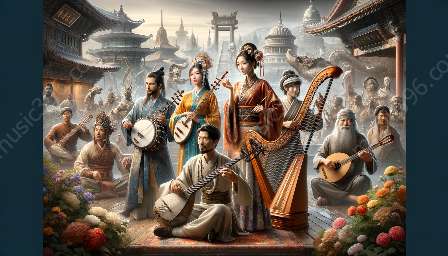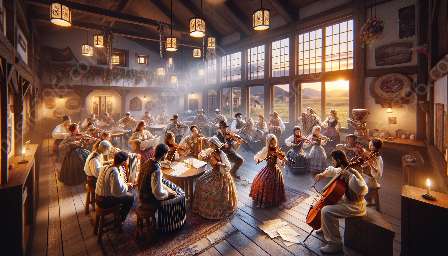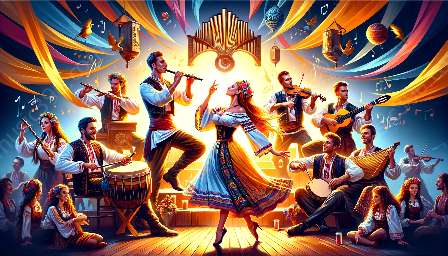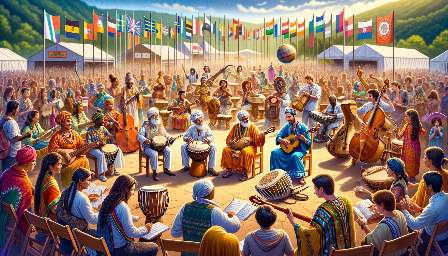European music has a long and rich history that has been shaped by a series of key historical events, spanning from the medieval period to the present day. These events have not only had a significant impact on European music but have also influenced world music as a whole. By understanding these historical events, we can gain valuable insights into the evolution and diversity of European music and its global reach.
Medieval Period: Gregorian Chant and Troubadours
One of the earliest influences on European music can be traced back to the medieval period, particularly with the development of Gregorian chant. This form of monophonic, unaccompanied sacred song has its roots in the early Christian Church and played a crucial role in shaping the musical landscape of Europe. Alongside Gregorian chant, the emergence of troubadours in Southern France and Northern Italy contributed to the development of secular music, introducing themes of courtly love and chivalry into European music.
Renaissance: Polyphony and the Rise of Opera
The Renaissance period brought significant advancements in European music, most notably the widespread adoption of polyphony. Composers such as Josquin des Prez and Giovanni Pierluigi da Palestrina explored complex harmonies and counterpoint, laying the foundation for the evolution of classical music. Additionally, the rise of opera in Italy during the late Renaissance period marked a turning point in the history of European music, introducing a new form of musical and dramatic storytelling that would influence composers across the continent.
Baroque Era: Orchestral Music and Bach’s Legacy
The Baroque era witnessed a flourishing of instrumental music, with the development of the orchestra and the concerto becoming prominent features of European music. Composers like Johann Sebastian Bach, Antonio Vivaldi, and George Frideric Handel made significant contributions to the Baroque repertoire, with their innovative compositions providing a lasting impact on European and world music. Bach’s legacy, in particular, continues to influence musicians and composers to this day.
Classical Period: Symphonies and Classical Forms
The Classical period in European music saw the rise of the symphony, sonata, and string quartet as dominant forms of musical expression. Composers such as Wolfgang Amadeus Mozart, Joseph Haydn, and Ludwig van Beethoven showcased mastery in crafting these classical forms, paving the way for the development of orchestral music as a central component of European musical tradition. The influence of the Classical period extended beyond Europe, shaping musical compositions worldwide.
19th Century: Nationalism and Romanticism
As Europe entered the 19th century, the rise of nationalism and romanticism greatly impacted the direction of European music. Composers like Richard Wagner, Giuseppe Verdi, and Bedřich Smetana drew inspiration from their respective national identities, infusing their compositions with folk melodies and cultural themes. This era of musical nationalism contributed to the diversification and enrichment of European music, while also influencing the development of musical traditions in other parts of the world.
20th Century: Avant-Garde, Jazz, and Global Fusion
The 20th century witnessed significant diversification and experimentation in European music, with the avant-garde movement challenging traditional musical conventions. Meanwhile, the influence of jazz from the United States permeated European music, leading to the emergence of new genres and styles. Furthermore, the interconnectedness of world music in the 20th century fostered global fusion, as European musicians embraced diverse influences from other cultures, contributing to the rich tapestry of contemporary world music.
Contemporary Era: Technological Advancements and Cross-Cultural Collaboration
In the contemporary era, technological advancements have revolutionized the production and distribution of European music. The advent of recording technologies, digital platforms, and streaming services has significantly transformed the landscape of music consumption and production, enabling cross-cultural collaboration and the global dissemination of European music. This interconnectedness has further blurred the boundaries between European music and world music, fostering an environment of cultural exchange and creative synergy.
Conclusion
The key historical events that have shaped European music have played a pivotal role in defining the rich and diverse tapestry of musical traditions across the continent. From the advent of Gregorian chant in the medieval period to the global fusion of contemporary world music, European music has continuously evolved and adapted to the changing social, cultural, and technological landscapes. By understanding the historical underpinnings of European music, we can appreciate its enduring influence not only within Europe but also on the global stage.










































